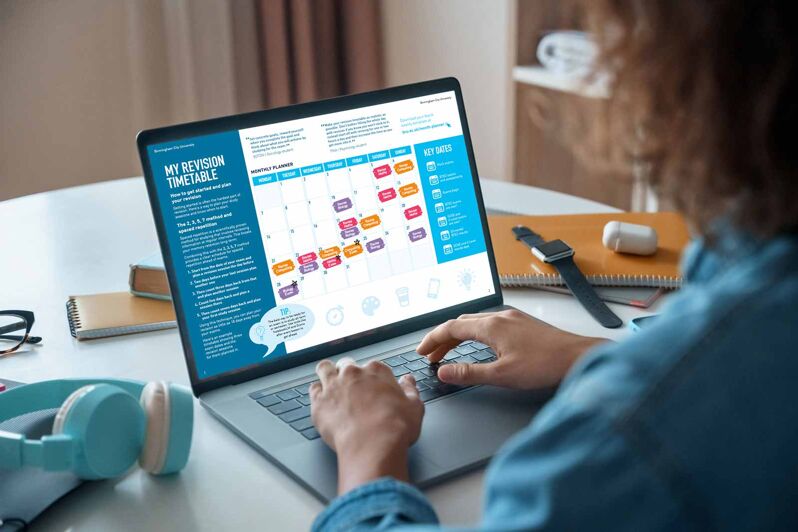
Blog Article

Before you jump into your assignment, it's worth organising your ideas and research into a detailed plan. Follow this step-by-step guide to successfully structure your coursework and assignments.
1. Understand what the assignment is asking of you
Before you start writing, read your brief carefully. Look for:
- Learning outcomes – These tell you exactly what the examiner is looking for.
- Assessment criteria – This shows how your work will be graded.
- Word count and format – Make sure you meet the requirements (e.g., report, essay, presentation).
Highlight key points and check if there are any specific instructions for how it should be structured.
2. Plan your assignment
Don’t rush into writing! Good planning actually saves time and makes writing much easier. Try one of these techniques:
- Mind maps – Great for brainstorming ideas and sorting ideas into categories.
- Bullet points – List key arguments and evidence, good for summarising your ideas and research.
- Assignment outline – Structure your work into clear sections or subheadings and fit your ideas and research into these topics.
Use your plan as a roadmap to stay focused and ensure you cover all required points.
3. The essential structure of a BTEC assignment
1. Title page
A professional-looking title page should include:
- Your name
- Assignment title
- Unit name and number
- Teacher’s name
- Submission date
Your college may have a set template, so check with your teacher if you’re unsure.
2. Table of contents (for longer assignments)
If your assignment is long, include a table of contents to help the reader navigate your assignment. This can also help you structure your work!
3. Introduction
The introduction sets the scene for your assignment. It should include:
- The purpose – What is the assignment about?
- The scope – What topics will be covered?
- Your approach – How will you structure the assignment?
Keep it clear and concise, you don’t want to waste too much of your word count or get into the main body of your work just yet.
4. Main body
This is the most important section and should be well-organised. Follow the plan you made before you started writing to follow a logical structure and make sure you include everything.
Depending on the assignment type, your structure may vary:
- For a report (Business, IT, or Science Assignments):
- Use clear subheadings like "Analysis," "Findings," and "Recommendations."
- Where relevant, use visuals like charts or graphs to support your arguments.
- For an essay (Health & Social Care, Creative Media):
- Each paragraph should focus on one idea, with a clear topic sentence and supporting evidence.
- Support arguments with references from books, articles, and case studies.
- Discuss different viewpoints and perspectives if the question is asking you to.
Tip: Always link back to the assignment question to ensure you’re answering the question thoroughly.
5. Conclusion
Summarise your work and provide a final thought. A good conclusion should:
- Restate the key points (without repeating yourself).
- Avoid introducing new information.
- Be short and to the point.
6. References and bibliography
BTEC assignments usually require Harvard referencing to make sure you show your research and avoid plagiarism. Our guide to Harvard referencing for BTEC students has examples and top tips to help you reference your work.
7. Appendices (if needed)
If you have extra information, for example, survey results or interview transcripts, place them in an appendix at the end.
4. Extra tips for a well-structured assignment
- Use headings and subheadings
- Write in formal academic style
- Keep paragraphs short and clear to avoid repeating yourself
- Proofread before you submit your assignment – check for spelling, grammar, and formatting errors, or even better, ask someone to proofread for you! Use our guide to make sure you’ve checked everything before submitting.
A clear structure makes your BTEC assignment easier to write and more impressive to read. By planning carefully, organising your ideas logically, and following the correct format, you’ll boost your chances of achieving top grades.
Next steps:
- Check your assignment brief for specific instructions.
- Make a plan, including your headings and subheadings.
- Use this structure as a template.
- Start writing!





